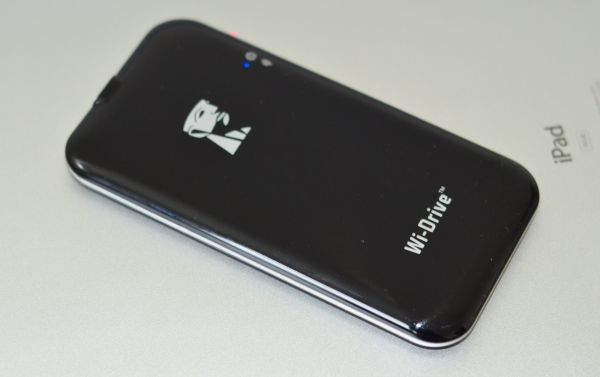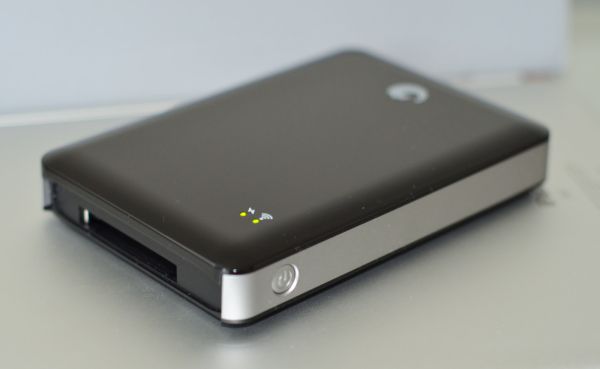Understanding Wireless Storage: Kingston Wi-Drive and Seagate GoFlex Satellite
by Vivek Gowri on November 21, 2011 2:30 PM ESTConclusion
Let’s start with the devices themselves. I’m a huge fan of Kingston’s Wi-Drive design—it’s sleek, elegant, and has everything you’d want in a simple wireless flash drive for iOS devices. But at the same time, it’s impossible to discount the fact that the GoFlex Satellite is a significantly more versatile device, given its capability to stream to different platforms and anything with a web browser. Plus, you get roughly fifteen times more storage capacity compared to the largest Wi-Drive Kingston has on offer.
The GoFlex Satellite, in my mind, is the ultimate roadtrip companion. You get 500GB worth of movie storage space, there’s no issues with the wireless connections (either being barred from using wireless radios on an airplane or having an internet connection that you can’t use), and it conveniently comes with a compact car charger in the box. If you’re going to be driving more than 1000 miles anytime soon, you will definitely appreciate having one of these on hand. However, I suspect that the 1000+ mile roadtrip with an iPad market is pretty limited.
The GoFlex Satellite makes more sense to me as a portable media solution than the Wi-Drive, because you can fit a decent chunk of even a very large media library onto a 500GB drive, whereas the Wi-Drive is more of a companion piece to carry a few documents, pictures, and movies. Even by that standard though, the Satellite is on the pricey side—you can find standard 500GB GoFlex portable drives for sub-$70, putting them at roughly 40% the price of the Satellite. Is the convenience of wireless file access worth paying nearly three times as much? Not for most people, but if you’re in the niche that needs it, the Satellite is a solid choice.
Honestly, I liked the Wi-Drive better. It’s a sleek, well designed, well integrated piece of technology that I greatly enjoyed using. It’s better looking, more portable, and more usable than the Seagate. The option to still connect to the internet, slower as it might be due to the increased network latency, is a rather useful feature that you don’t get with the Satellite (though the need to disable security in the present firmware to get this working needs to be addressed). The Wi-Drive launched at $179 for the 32GB and $129 for the 16GB, prices that happen to fall slightly above Apple’s pricing hierarchy. Apple asks for $100 to go from 16GB to 32GB, and $200 to go from 16GB to 64GB, so on the one hand it's a reasonable idea to survive with a limited amount of storage and put the money towards a higher capacity future-generation iDevice. On the other hand, having built-in storage with faster access and better battery life without the need to carry an extra device isn't without merit.

With the new street prices of $79 and $99 for the 16GB and 32GB models, respectively, it’s a much easier sell, especially for the 32GB model. The value question is simple—you’re undercutting Apple’s own steps between storage capacity rather significantly, so it’s not a senseless financial proposition. As such, it’s not a bad idea to pick up a Wi-Drive as a cool way to expand storage on your mobile device and wow your friends in the process, but going through a separate wireless network and having a wireless passthrough to get internet is a hassle, one that needs to be fixed in future generations.
It’s always difficult to provide a clear conclusion on devices in a completely new category, for a multitude of reasons. Early devices tend to be expensive and functionally limited, but the underlying concept has the potential to go much farther. That basically sums up my feelings for wireless storage at this point: I don’t personally see either of the two devices here as game changers; the Wi-Drive is an interesting toy to pick up given the price drop, but that’s about it.
With that said, I think wireless storage is going to play a big role in the move to cloud-based applications and data, moving storage away from devices and turning them into thin-clients for cloud services. Portable wireless storage is one component for when you have local content to access. It adds another dimension of versatility and portability to the data you store, and it has the potential to become the wireless replacement for flash drives and the like. However, the current solutions, including the Kingston and Seagate we looked at, give up too much of the convenience factor to be worth the hassle unless you really, really need to extend the storage of your mobile device right now.











32 Comments
View All Comments
Glibous - Monday, November 21, 2011 - link
I really like how the WD product looks but as you said in the first page...looks like a re-purposed iPhone 3G. It is very similar. I'm just hoping Apple doesn't find a way to use that in another patent war. I don't think WD has the same capital as Samsung to fight them off..Impulses - Monday, November 21, 2011 - link
These things would be irrelevant if Apple included microSD slots and/or USB slots into their devices. 32GB Class 4 cards from Sandisk can easily be found for $35.Almost every Android tablet can be connected to a portable USB HDD or any thumbdrive with a USB OTG cable; or an extra adapter in the case of tablets like the Galaxy 10.1 and TF which lack USB w/o a dock and only have the propietary charging ports on board ($10 adapter converts that to USB). Even some phones can use OTG USB cables to hook up HDDs, gamepads, etc.
Just saying...
Johnmcl7 - Monday, November 21, 2011 - link
This is exactly what I was thinking when reading the article and surprised none of it is mentioned, I can certainly see why these devices may be useful for Apple owners but less so for Android over time. I currently have a Galaxy Note so if I was needing more storage I can either pop in a micro SD card (or have multiple and swap between them) or simply plug in a standard USB flash drive or hard drive through USB OTG.John
melgross - Monday, November 21, 2011 - link
Honestly, most other companies use SD slots so they can cheap out on the memory they offer. Often when buying one, it comes with even less memory than the lowest memory version of the Apple device, forcing you to buy more just to get even.In addition, when you rely not hat, as I did with my Treo 700p, you find that your always changing out cards, because you have different things on each card. With bigger cards these days that's less of an issue, but it still exists. And it's only now that Google is making storage on cards the same as internal storage. Truth is, that's been a bitch.
The only annoying thing about the way Apple does it is to not allow mass storage directly in USB. But then, do you really want external storage dangling off your device? I don't.
The improvement to the Kingston that I would like to see is for it to not have any internal storage, but to have a UDMA 7 CF slot instead.
medi01 - Monday, November 21, 2011 - link
BS.Most other companies do not have loyal fun base that is eager to pay 100$ per 16Gb "extra" memory.
Same goes for your "often" argument. Most Android tablets start with 16Gb AND have micro SD slot.
medi01 - Monday, November 21, 2011 - link
I wish I new which device with micro SD card support has it "dungling out of the device". Maybe ifanboi need to look around.inplainview - Monday, November 21, 2011 - link
What? Could not quite comprehend the insult you were trying to throw. Try again please.inplainview - Monday, November 21, 2011 - link
I know you from AI mate. How's things and your arguments are spot on here as over there.Johnmcl7 - Monday, November 21, 2011 - link
The Note offers either 16GB or 32GB (more than the base Apple devices) and as it supports 64GB (and more beyond) SDXC cards that takes its capacity beyond the largest Apple offer and my last phone was 32GB onboard and microSD expansion. And as SDXC cards expand, it's likely the Note can take more memory than the next Iphone as well. Google is not making internal the same as external, that's up to the handset manufacturers and it's not uniform across Android devices. I don't see your Treo example as relevant as the market has changed substantially in the many years since it was released.As for devices hanging off the devices, if it's sitting docked or similar (which is where I'd be using a storage device) then I wouldn't mind having a cable coming off it just as I have no problem running it with headphones attached.
Plus at worse if I really want to use a wifi storage devices as reviewed here, I still can. However it's not been a problem previously and doubt it will be now
sethiol - Monday, November 21, 2011 - link
Ditto. Just one more reason why I tend to avoid most Apple products.